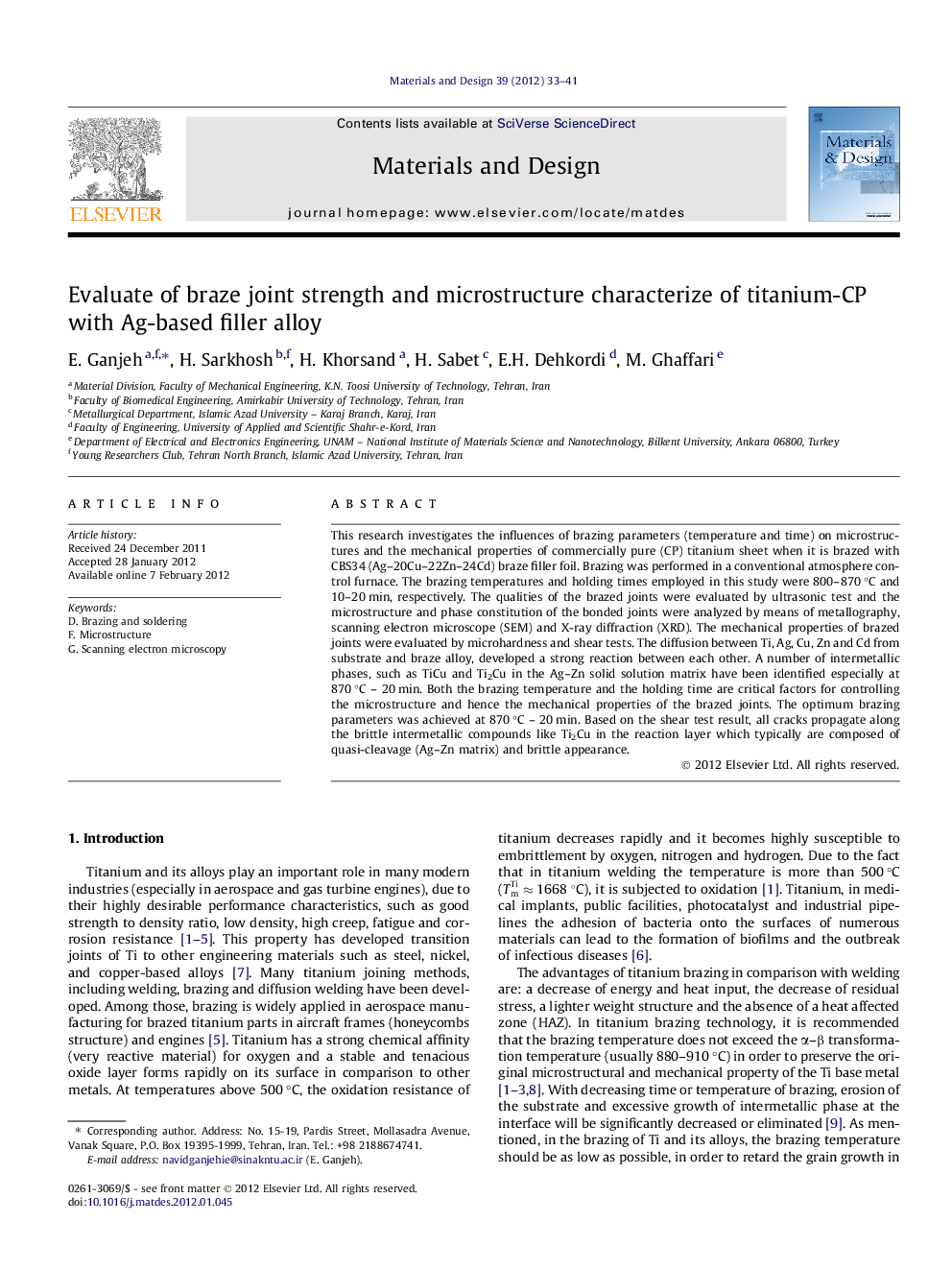| کد مقاله | کد نشریه | سال انتشار | مقاله انگلیسی | نسخه تمام متن |
|---|---|---|---|---|
| 830646 | 1470358 | 2012 | 9 صفحه PDF | دانلود رایگان |

This research investigates the influences of brazing parameters (temperature and time) on microstructures and the mechanical properties of commercially pure (CP) titanium sheet when it is brazed with CBS34 (Ag–20Cu–22Zn–24Cd) braze filler foil. Brazing was performed in a conventional atmosphere control furnace. The brazing temperatures and holding times employed in this study were 800–870 °C and 10–20 min, respectively. The qualities of the brazed joints were evaluated by ultrasonic test and the microstructure and phase constitution of the bonded joints were analyzed by means of metallography, scanning electron microscope (SEM) and X-ray diffraction (XRD). The mechanical properties of brazed joints were evaluated by microhardness and shear tests. The diffusion between Ti, Ag, Cu, Zn and Cd from substrate and braze alloy, developed a strong reaction between each other. A number of intermetallic phases, such as TiCu and Ti2Cu in the Ag–Zn solid solution matrix have been identified especially at 870 °C – 20 min. Both the brazing temperature and the holding time are critical factors for controlling the microstructure and hence the mechanical properties of the brazed joints. The optimum brazing parameters was achieved at 870 °C – 20 min. Based on the shear test result, all cracks propagate along the brittle intermetallic compounds like Ti2Cu in the reaction layer which typically are composed of quasi-cleavage (Ag–Zn matrix) and brittle appearance.
► Temperature and/or time were the main factor of controlling intermetallic compound.
► Developing Ag–Zn matrix reinforced by TiCu/Ti2Cu build good mechanical properties.
► Mixed of quasi-cleavage and brittle fracture was occurred at fractured surfaces.
► Brazing at 870 °C – 20 min generated a shear strength of 164.2 MPa.
► Generally, the fracture path was occurred from the interior of the braze alloy.
Journal: Materials & Design - Volume 39, August 2012, Pages 33–41